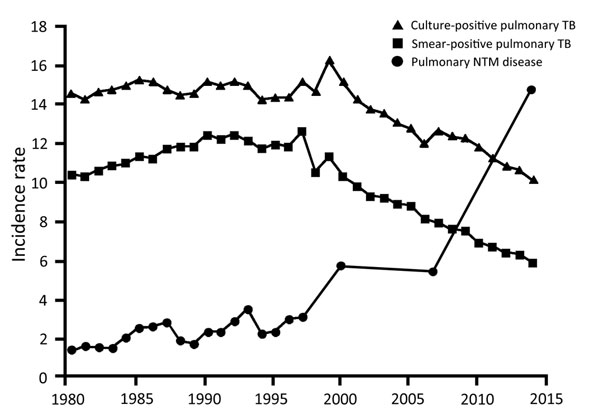Volume 22, Number 6—June 2016
Letter
Epidemiology of Pulmonary Nontuberculous Mycobacterial Disease, Japan1
Figure

Figure. Incidence (no. cases/100,000 person-years) of pulmonary nontuberculous mycobacterial (NTM) disease, culture-positive tuberculosis (TB), and smear-positive TB in Japan during 1980–2014. The nationwide survey revealed that the incidence rate of pulmonary NTM disease exceeds that of TB. The epidemiologic survey before 1988 was conducted annually by the same research group; subsequently, another group performed the epidemiologic survey only in 2001 and 2007.
1Preliminary results from this study were presented at the American Thoracic Society 2015 International Conference; 2015 May 15–20; Denver, Colorado, USA (http://www.atsjournals.org/doi/abs/10.1164/ajrccm-conference.2015.191.1_MeetingAbstracts.A5268).
Page created: May 17, 2016
Page updated: May 17, 2016
Page reviewed: May 17, 2016
The conclusions, findings, and opinions expressed by authors contributing to this journal do not necessarily reflect the official position of the U.S. Department of Health and Human Services, the Public Health Service, the Centers for Disease Control and Prevention, or the authors' affiliated institutions. Use of trade names is for identification only and does not imply endorsement by any of the groups named above.